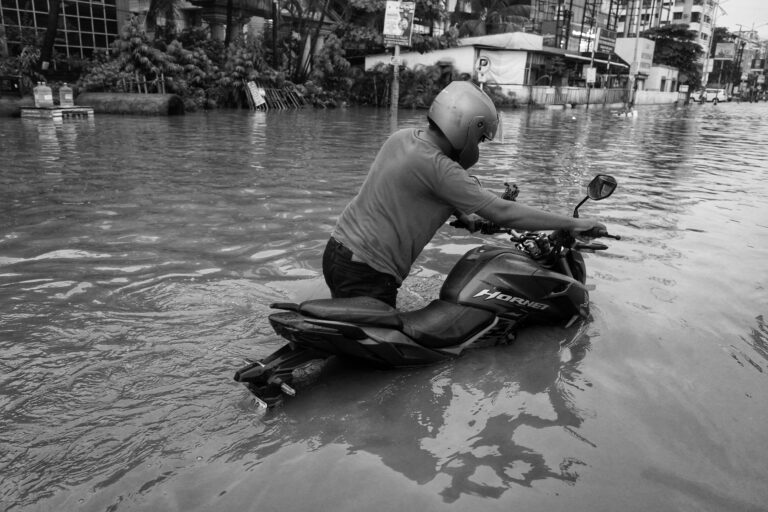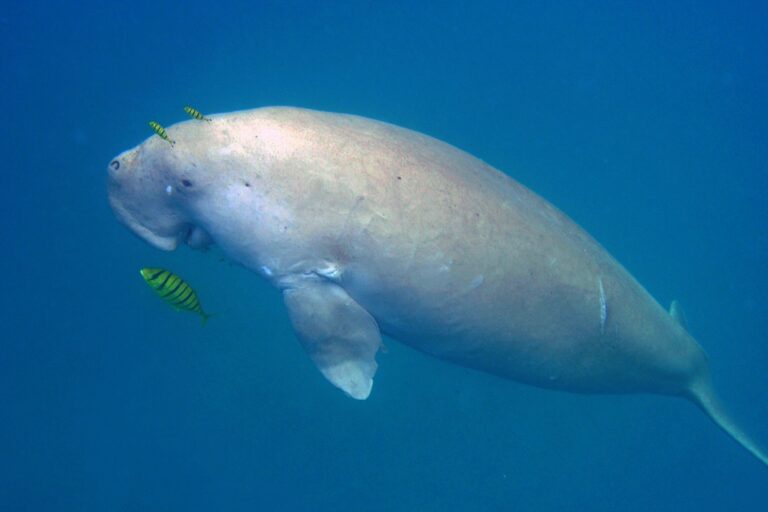- A new disaster risk index finds 8% of central Kerala to be under “high” or “very high” risk from disasters.
- The study suggests scaling up disaster risk insurance as a way to support individuals and businesses recovering from the aftermath of a disaster.
- The researchers relied on 12 broad indicators and used the latest framework from The Intergovernmental Panel on Climate Change (IPCC) to come up with the index.
A new study assessing disaster risk along the coast of central Kerala has said that apart from measures like coastal protection, improving drainage, and installing early warning systems, improving the uptake of home insurance “can provide financial protection and support to individuals and businesses to recover and rebuild stronger after a disaster.”
The coast of Kerala is vulnerable to a number of hazards, including coastal erosion, cyclones, and storm surges. In March this year, several houses and roads across the districts of Alappuzha, Thiruvananthapuram, Kollam and Thrissur were flooded due to a strong swell of waves and high speed winds, which put these regions on high alert.
The paper, published last month in the journal Natural Hazards, assessed the risk profile of a 190-kilometre long stretch along the coasts of Alappuzha, Ernakulam, and Thrissur districts, “one of the fastest-growing areas driven by the expansion of harbours, marine trade, and tourism.” The central coast of Kerala was selected also because it experiences the highest number of hazard events – 12 for every 10 kilometer stretch – compared to the north and south.
The study found that Punnapra (Alappuzha district), Ambalappuzha (Alappuzha), Chellanam (Ernakulam), and Kuzhupilly (Ernakulam) were “very high risk zones”, due to a number of factors, such as high population density, high built up area, frequency of surge events and high rainfall.
The floods that swept through the state in 2018 and 2019 destroyed and damaged around seven lakh (700,000) homes, with the reconstruction costing the government nearly Rs. 1,800 crores (Rs. 18 billion) according to news reports. Insurance claims amounted to just around Rs. 1,000 crores (Rs. 10 billion), which experts at the time said was a symptom of low penetration in the state. The amount paid by the government to reconstruct homes was only a fraction of Rs. 6,410 crores (Rs. 64 billion) worth of losses and damages to housing and settlements incurred.

Including vulnerability and exposure as part of the risk index
The researchers created a disaster risk index using the latest framework introduced by the Intergovernmental Panel on Climate Change (IPCC), in which risk is conceived as a function of hazard, vulnerability, and exposure. In the index, hazards are defined as a natural process that could cause loss of life, health impacts, property and environmental damage, vulnerability as the social, economic, and environmental factors which increase the susceptibility to the impacts of a hazard, and exposure as the presence of people, livelihoods, infrastructure, ecosystems and assets that could be adversely affected.
“The benefit of using this type of framework to assess risk is that it not only looks at potential hazards, but also captures the potential adverse impacts and losses that can occur, so it’s a more holistic picture compared to just looking at the probability of a hazard occurring or the vulnerability of a region,” said Sanjay Balachandran, a co-author of the paper who is pursuing his PhD at the Kerala University of Fisheries and Ocean Studies.
Twelve indicators covering all three categories were included in the study to come up with the index. These included shoreline change rate, proximity to cyclone tracks, storm surge height, number of sea surge events, precipitation intensity, and sea level rise, population density and land use land cover, elevation, slope, mean significant wave height, and drainage density.

The results show that 8% of the study area falls under “high” and “very high” risk zones, while the rest are medium, low, and very low risk. Kuzhupilly in Ernakulam, for example, is considered at high risk “due to higher erosion, very high population density, built-up land occupying its major land parcel, and gentle slopes.”
“Larger half of Ernakulam, southern Alappuzha, and few portions of southern Thrissur are under moderate risk, which implies that the region may potentially experience risks or adverse events,” the paper adds.
“We’ve limited our analysis to just the central Kerala coast because this is a novel approach and the first time, to our knowledge, that such an index is being used to assess risk in Kerala. But it can be used for the whole coastline of Kerala as well,” said Balachandran.
Employing risk transfer mechanisms
Around 45% of Kerala’s coasts have eroded from 1991 to 2016, according to the National Assessment of Shoreline Changes to the Indian Coast. K.V. Thomas, former scientist with the National Centre for Earth Science Studies (NCESS), says that one of the biggest causes for erosion is sand mining and the building of harbours on tidal inlets – channels that connect the open sea with a lagoon. “The tidal inlet dynamics are modified by harbours and sand mining. Inlet modifications destabilise the shore and lead to loss of the beach,” he explains, adding, “To deal with the erosion we started to construct sea walls, which again modified the sediment dynamics and worsened the problem.”
Apart from sea erosion, coastal areas are also susceptible to sea level rise, storm surges, cyclones, and heavy rainfall. At least 310 kilometres of the coast has been covered with seawalls to protect against erosion and other disasters, but they have proven ineffective over the long term.
“The best way to lower the exposure is to discourage or prevent the development of buildings and other assets in low lying or flood prone areas. Implementing soft engineering coastal protection techniques, such as bio-shield plantations, beach nourishment, and sand dune restoration/preservation can reduce the impact of high waves as well as erosion on coastal areas,” the paper states.

It adds that risk transfer mechanisms such as home insurance can provide financial support in the aftermath of a disaster. Affordability of insurance is challenging because “most insurance products are targeted towards wealthier and middle-class consumers, leaving a significant gap in coverage for low-income households,” the study states. The researchers therefore recommend increasing public awareness, and creating “affordable and tailored insurance products with reasonable premiums,” to bridge the gap.
The Kerala government is considering collaborating with insurance companies to help scale up the uptake of disaster home insurance, according to its Fourteenth Five-Year Plan (2022-2027). A Risk Transfer Mechanism Committee constituted in 2021 recommended the government “develop a regulatory body for implementing the risk transfer mechanisms and its financial structure.”
Not all experts agree that insurance is the best adaptive measure in the face of disaster, however. “Fisher communities are custodians of these ecosystems and land, but there are also other communities who acquire this land to establish residential areas, and tourism related infrastructure. Insurance may be useful for those who can afford it, like business people who are already investing to acquire land. But for the fisher community who did not cause the erosion and other problems, the beach is their asset. In their case, it’s the duty of the state and the persons who caused the loss of beach to protect and provide when disaster strikes,” opines Thomas.
Read more: The eroding coast of Chellanam
Banner image: A beach in Kerala, India. Photo by Pdpics/Wikimedia Commons.














